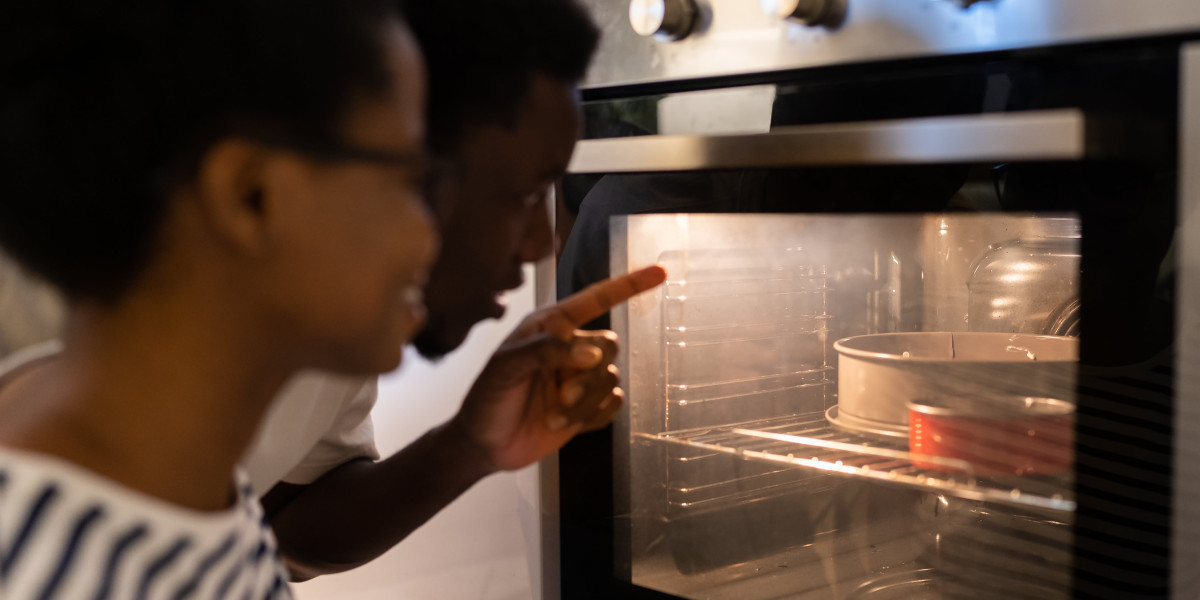Understanding Built-in Electric Ovens: A Comprehensive Guide
In modern-day kitchens, Zanussi 60cm Built-In Electric Oven – Shop Now! electric ovens have actually ended up being a basic feature, providing convenience, performance, and a classy integration into kitchen design. This post intends to inform property owners and cooking lovers about the benefits of built-in electric ovens, essential factors to consider when choosing one, and maintenance pointers to ensure lasting performance.

What is a Built-in Electric Oven?
A built-in electric oven is developed to be set up within cabinets or walls, perfectly mixing into the kitchen's architecture. Unlike standalone ovens, these designs save floor space and can be positioned at eye level, facilitating easy gain access to and tracking while cooking.
Benefits of Built-in Electric Ovens
- Area Efficiency: These ovens utilize vertical area, making them ideal for smaller cooking areas or those aiming to maximize counter area.
- Aesthetic Appeal: Built-in ovens provide a clean and contemporary look that enhances the kitchen's general design.
- Ergonomics: They are set up at comfy heights, lowering the pressure on the back and knees, specifically when loading or discharging meals.
- Advanced Features: Many built-in electric ovens included state-of-the-art functions like smart controls, convection cooking, and self-cleaning choices, which can make cooking much easier and more effective.
- Improved Functionality: Models frequently consist of extra functions such as numerous cooking modes, timers, and temperature probes.
Key Considerations When Choosing a Built-in Electric Oven
When choosing a built-in electric oven, numerous factors must be taken into consideration to ensure it fulfills your cooking requires and fits within Upgrade Your Kitchen: WILLOW WOF60DSS Single Oven kitchen layout.
Size and Capacity
Built-in electric ovens normally can be found in various sizes. It's important to determine the allocated space to guarantee an appropriate fit. Here are typical sizes:
- Single Oven: 24 to 30 inches large, appropriate for many cooking tasks.
- Double Oven: Two separate compartments, permitting you to cook several meals at different temperatures.
- Wall Ovens: Available in plus sizes, matched for extensive cooking experiences.
Functions
Selecting functions that line up with your cooking practices is crucial. Think about the following options:
- Convection Cooking: Distributes heat equally for consistent outcomes.
- Smart Technology: Enables remote control and preheating through mobile phone apps.
- Self-Cleaning: Simplifies upkeep and cleansing processes.
- Steam Cooking: Adds moisture to meals for better cooking results.
Installation Requirements
Built-in electric ovens need adequate electrical wiring and ventilation alternatives. It's suggested to speak with professionals during the installation phase to fulfill electrical codes and make sure safety.
Cost Range
The expense of built-in electric ovens can vary considerably from budget alternatives (₤ 600 - ₤ 1,200) to high-end models (₤ 2,000 and above). Consider your budget plan and cooking frequency when making a choice.
| Rate Range | Features | Best For |
|---|---|---|
| ₤ 600 - ₤ 1,200 | Basic functions, manual controls | Casual cooks |
| ₤ 1,200 - ₤ 2,000 | Convection, clever technology | Serious home cooks |
| Above ₤ 2,000 | Premium materials, advanced features | Expert chefs or gourmet cooking enthusiasts |
Maintenance Tips for Built-in Electric Ovens
Ensuring that an electric oven runs efficiently involves regular upkeep. Here are some useful tips:
- Regular Cleaning: Wipe down the door and inside the oven after each usage to avoid grease accumulation.
- Self-Cleaning Cycle: Utilize the self-cleaning function occasionally (if available). Follow the manufacturer's directions for optimal performance.
- Examine Seals and Gaskets: Inspect the door seals for wear and tear to preserve cooking performance.
- Calibrate Temperature: Regularly check and adjust the oven's temperature level for accuracy cooking.
- Professional Servicing: Schedule annual upkeep checks with qualified professionals, particularly for sophisticated designs with numerous electronic elements.
Frequently Asked Questions (FAQs)
1. Are built-in electric ovens more effective than conventional ovens?
Yes, built-in electric ovens frequently have better insulation and features like convection cooking that can prepare food faster and evenly, saving energy.
2. Can I set up a built-in electric oven myself?
While some helpful individuals may select to try a DIY setup, it is recommended to hire a professional to make sure safe and compliant setup.
3. Just how much power does a built-in electric oven use?
Generally, AEG 6000 Built-In Electric Double Oven - Buy Now electric ovens consume in between 2,400 to 5 functions,000 watts, depending upon the design and features. Constantly describe the producer's specifications for precise figures.
4. Do built-in electric ovens need special cabinets?
Yes, built-in electric ovens need custom-made cabinetry or wall enclaves that support their weight and enable for appropriate ventilation. Ensure that the cabinets complies with installation standards outlined by the manufacturer.
Built-in electric ovens are an important addition to any modern-day kitchen, providing a selection of features that make cooking easier and satisfying. By comprehending the benefits, selection criteria, and maintenance requirements related to these ovens, customers can make informed decisions that align with their cooking requirements and lifestyle choices.




